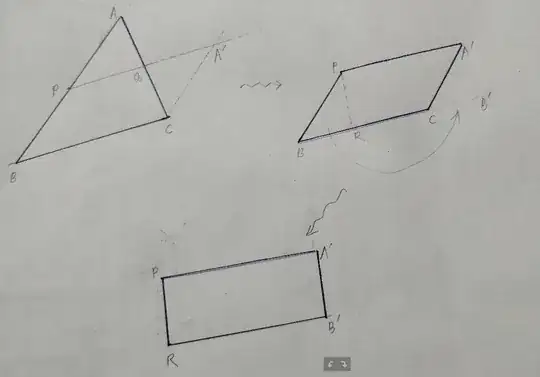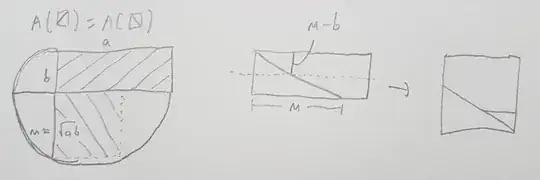I have a triangle $ABC$ and I want to construct a square of the same area as that of the triangle using ruler and compass.
Consider the following image.

I first locate the mid-points of $AB$ and $BC$ and draw a line parallel to $AB$ passing through $C$. Say this line intersects $PQ$ at $A'$. Then chopping off $APQ$ and putting it in place of $A'QC$ leads to the parallelogram $PA'CB$.
Dropping perpendiculars from $P$ and $A'$ to $BC$ gives points $R$ and $B'$. Chopping off the triangle $PBR$ from the paralellogram and sliding it to coincide with the imaginary triangle $A'CB'$ leads to the rectangle $PRB'A'$.
Now I want to convert this rectangle into a square. I could do something like Job Bouwman's answer here but that construction does not have the spirit of "chopping off and rearranging the pieces to obtain a square".
Can somebody see as to how to go about hacking away at the rectangle and make the pieces fall into the shape of a square?
Thank you.
